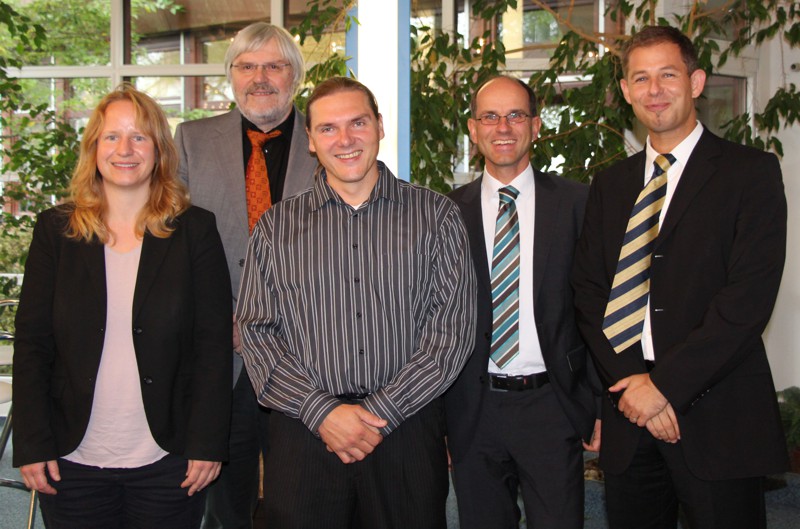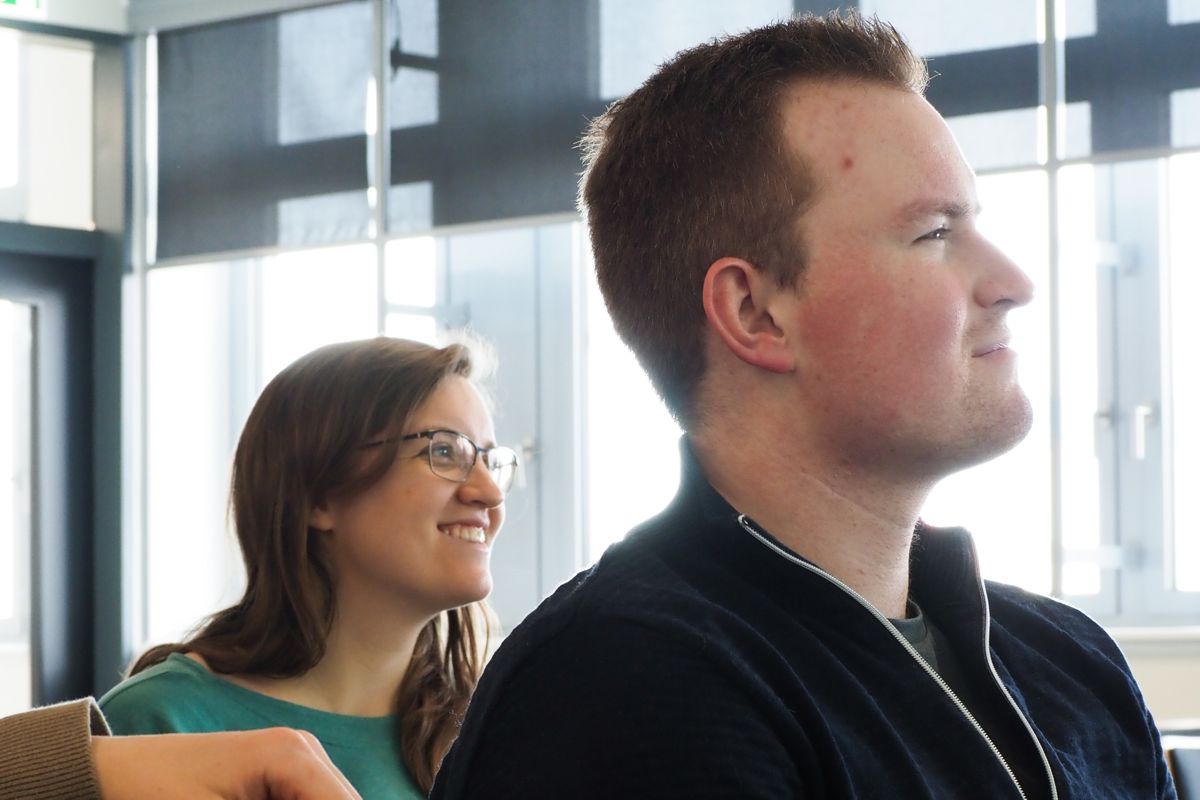No. 1 - Markus Christoph
Markus Christoph: Untersuchung verschiedener Verfahren zur messtechnischen Bestimmung und Nachbildung der Akustik insbesondere von Fahrzeugaudiosystemen
Shaker-Verlag, 2013
Commission
- Prof. Dr.-Ing. Gerhard Schmidt
(first reviewer)
- Prof. Dr.-Ing. Henning Puder
(second reviewer)
- Prof. Dr.-Ing. Reinhard Knöchel
(examiner)
- Prof. Dr.-Ing. Martina Gerken
(head of the examination board)
Abstract
Bei der Verfolgung des ursprünglichen Ziels der Dissertation ein lautsprecherbasiertes System zur akustischen Dokumentation zu finden wurde schnell erkannt, dass bereits einige etablierte Verfahren zur Decodierung, d.h. für die Rekonstruktion von zuvor, meist künstlich codierter Wellenfelder, wie etwa die Wellenfeldsynthese oder das Higher-Order-Ambisonic (HOA)-Verfahren, existieren. Dagegen stelle stellte sich im Laufe der Arbeit heraus, dass im Bereich der Codierung, also der messtechnischen Bestimmung von Wellenfeldern, noch ein höherer Forschungsbedarf existiert. Zudem bestand von Beginn an das Interesse vorrangig Fahrzeugaudiosysteme zu auralisieren. Aus diesen Gründen entwickelte sich die Untersuchung unterschiedlicher Verfahren zur messtechnischen Bestimmung der Akustik, insbesondere für Audiosysteme in Kraftfahrzeugen, zum Schwerpunkt dieser Arbeit.
Nach grundlegender Untersuchung unterschiedlichster Verfahren zur messtechnischen Bestimmung der Akustik, kristallisierte sich die Verwendung zirkularer bzw. sphärischer Mikrophonarrays, wie sie im HOA-Verfahren Verwendung finden, als erfolgversprechendste Methode heraus. Unter Verwendung der HOA-Theorie wurden dabei vorrangig sphärische, d.h. kugelförmige Mikrophonarrays zur dreidimensionalen, messtechnischen Bestimmung von Wellenfeldern näher untersucht. Dabei konnten Wege zur Verbesserung bestehender Messsysteme durch Modifikationen in ihrem Design gefunden werden.
Messungen bestätigten dabei die Wirksamkeit der neuen Designs. So konnte etwa die wirksame Bandbreite durch ein neuartiges Kugelmikrophonarray durch eine einfache, rein mechanische Modifikation nahezu verdoppelt werden, ohne dabei die Anzahl der Sensoren zu erhöhen. Aber auch Veränderung im Filterdesign wurden untersucht, was zu einem neuartigen Algorithmus führte, welcher in der Lage ist Filter zu erzeugen, sodass das Mikrophonarray einerseits eine gewisse, minimale Sukzessibilität nicht unterschreiten und zudem, unabhängig von der betrachteten Frequenz, stets einen gleichen, maximalen Pegel in der Hauptempfangsrichtung aufweist. Schließlich wurden noch weitere Konzepte vorgestellt wie sich die Wirkung der Mikrophonarrays für die Codierung durch einfache, praxistaugliche Modifikationen weiter steigern lässt.
Neben der messtechnischen Bestimmung der Akustik wurden zudem noch Verfahren zur Nachbildung bzw. zur Verbesserung der Akustik untersucht, wobei hierzu die Inverse-Filter-Theorie näher betrachtet wurde. Basierend auf Aufnahmen in einem Fahrzeug wurde dieses Prinzip untersucht. Der Fokus wurde dabei auf den Filterentwurf gelegt, wobei eines der Ziele war, diese so zu entwerfen, dass sie ein möglichst geringes pre-ringing aufweisen. Hintergrund hierbei ist, dass klassische Entwurfsverfahren Filter erzeugen, welche unter einem zum Teil starken Vorläuten leiden, was sich akustisch als störend auswirkt und folglich weitestgehend vermieden werden sollte. Der Tribut, der dabei gezahlt werden musste war, die zeitliche Komprimierung der resultierenden, d.h. mit den inversen Filtern gewichteten Raumimpulsantworten, aufzugeben. Dies stellte sich letztendlich jedoch als wesentlich akzeptabler heraus als das Vorhandensein des zuvor genannten pre-ringing.





 Visit of the Hans Böckler Foundation
Visit of the Hans Böckler Foundation